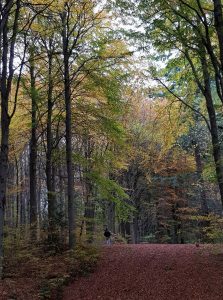
British tree cover could look very different by the end of the century. If the world’s average temperature rises by 3 to 4 degrees by the year 2100, as many scientists have warned, the resultant hot and dry summers will kill many British natives. We need to be proactive in planning ahead, as eighty years isn’t a long time in the life cycle of some species.
Oak and beach trees will be the first to suffer. Ash and Alder are already no longer being planted on many sites in Southern England due to the emergence of new, exotic diseases. Imported trees are increasingly used in many new planting schemes, mainly those adapted to a more Mediterranean climate. The Forestry Commission is testing the best replacements, which include: Chinese Mahogany, Vietnamese golden cypress, Montpelier maple and, more controversially, eucalyptus (mainly as a bio fuel). The conifer alternatives include Serbian spruce and Western red cedar.
These imports are attractive and potentially valuable sources of timber, but the impact of wildlife, which has been dependent on our native species, could be devastating. The potential for new threats from pests and diseases, which are currently rare, could lead to enormous damage and a very different looking countryside.
Britain currently has around three billion trees, a 27% increase since 1990. The aim is to increase tree cover, to lock up even more CO2 and introduce more diversity to make our forests more resilient in tackling these predicted threats.
How can EcoNorth Help You?
We have the expertise to diagnose problems you may be experiencing with your tree stock. Today, simply re-stocking with the same trees isn’t always the best solution. Net gain is an increasing requirement in many planning frameworks for redevelopment sites and we can recommend suitable species replacements than can cope with some of the changes expected in the coming decades.
To learn more, please click on the links below.
https://www.forestresearch.gov.uk/research/delivering-resilient-forests/
